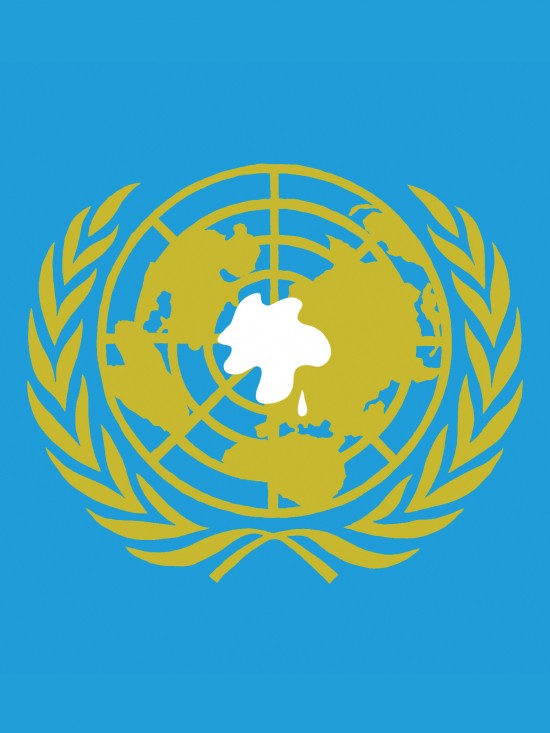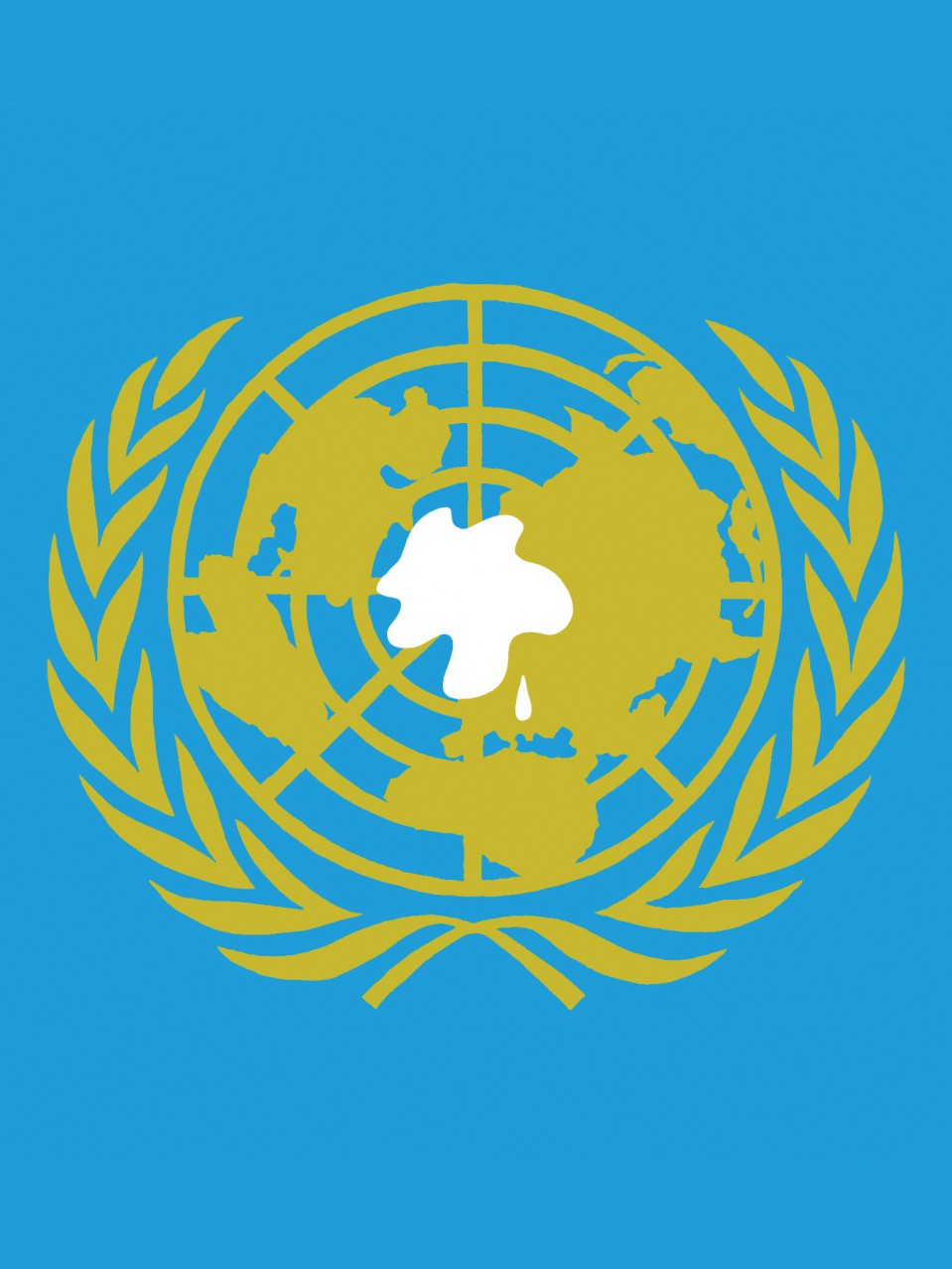Sustainable Energy
A Plan B for Climate Agreements
U.N. negotiations are going nowhere, and greenhouse-gas emissions are soaring. It’s time to move on.



In 2007, just before he accepted the Nobel Prize on behalf of the U.N.’s Intergovernmental Panel on Climate Change (IPCC), Rajendra Pachauri, the organization’s leader, declared that the world was running out of time to prevent catastrophic global warming. “If there’s no action before 2012, that’s too late,” Pachauri told the New York Times. “What we do in the next two or three years will determine our future. This is the defining moment.”
This April, the IPCC released a long-awaited report assessing just how far we’ve come since Pachauri’s stark pronouncement. The news was grim. There has yet to be any sign of the global action that Pachauri and others had desperately sought. In 2007, the IPCC called for emissions to level off by 2015, but the world is emitting greenhouse gases faster than ever. Even now, Pachauri and some other IPCC leaders remain publicly optimistic, saying it’s still possible to avoid catastrophic climate change if we act “very soon.” But delve into the new IPCC report itself and you’ll find a much less hopeful picture.
“What the report overall shows is that the only way you’re going to stop climate change is by assuming that governments will make a whole series of heroic efforts,” says David Victor, director of the Laboratory on International Law and Regulation at the University of California at San Diego and one of the lead authors of the report. For example, if we’re to meet the U.N. goal of limiting the increase in the world’s average temperature to 2 °C above preindustrial levels, all key technologies—wind, solar, nuclear, power plants that capture and store carbon dioxide, and so on—have to scale up quickly, even though some haven’t been growing at all and carbon capture at power plants has yet to be commercially deployed. The report says the world’s governments must also immediately agree to binding and effective climate policies—even though massive efforts over the past two decades have failed to produce any such agreements.
“A lot of publicity was given to the fact that the IPCC says limiting warming is doable,” says Robert Stavins, director of the Harvard Environmental Economics Program and also a key IPCC author. But the situation “is not as rosy as it’s been characterized,” he says. “When you introduce political reality, then you’re talking about [2 °C] not being feasible.”
The report inadvertently suggests another conclusion: after more than two decades of the U.N. climate-treaty process, long thought to be our best shot at getting governments to act on global warming, it’s time for a new approach. Although there are many reasons emissions have continued to increase, an obvious one is simply that the U.N. approach to climate change—which involves gathering representatives from nearly 200 countries and trying to hash out treaties that articulate global, binding limits on greenhouse gases—isn’t working. The new IPCC report itself notes that governments are increasingly turning to forums outside the U.N. to make progress.
Out of control
The U.N. became seriously involved in addressing climate change in 1988, when it created the IPCC, an organization tasked with assessing the science on climate change and laying the foundation for climate treaties. The IPCC produces voluminous reports every six years or so; the report in April was part of the organization’s fifth such assessment. An organization designed to actually produce climate policy came later, in 1994, when the U.N. established the Framework Convention on Climate Change, which laid ground rules for international coöperation on climate policy and set the vague yet ambitious goal of stabilizing greenhouse gases “at a level that would prevent dangerous anthropogenic (human-induced) interference with the climate system.”
The most famous agreement to emerge so far is the Kyoto Protocol, a 1997 treaty that established binding emissions limits on some industrial countries and set up a mechanism to finance emissions-reducing projects in poor countries. Kyoto expired in 2012 and has yet to be replaced. The new IPCC report concludes the obvious, stating that Kyoto accomplished very little—the economic collapse in Eastern Europe after the fall of the Soviet Union did more to reduce emissions, according to Victor. Since Kyoto, U.N. actions have been largely symbolic; an example is the nonbinding emissions targets that came out of a meeting in Copenhagen in 2009. The goal of a global, all-inclusive treaty keeps getting kicked down the road. The most recent meeting, in Warsaw, ended with nations promising they’d come up with a universal agreement in Paris next year. Don’t hold your breath.
Achieving consensus among nearly 200 countries is one challenge for the United Nations on climate policy, but it’s not necessarily the main one. Another problem is the U.N.’s focus thus far on specific emissions limits. Governments don’t know how much it will cost to comply with these limits, because it’s often unclear how much low-carbon technologies will cost to deploy. Climate negotiators don’t want to commit their governments to a treaty whose economic effects are unpredictable.
What’s more, not every government is capable of enforcing such regulations. Even countries with significant regulatory powers would struggle to monitor and control their overall carbon dioxide emissions. As an example, the United States recently set aggressive fuel-economy standards for cars. These could reduce emissions, but total emissions ultimately depend on how much people drive.
A far more effective strategy for reducing carbon dioxide emissions would be to encourage international coöperation on investing in new, cleaner energy technologies and to establish incentives for such investments. But instead, the U.N. has obsessed over setting specific binding emissions limits on greenhouse gases.
Changing climate
There is no simple alternative to the U.N. process. But to stand a chance of being adopted and making an impact, international climate policy will probably have to start with smaller groups of countries and focus on single industries or economic sectors. These kinds of policies won’t be enough to stabilize greenhouse-gas levels on their own, but they could slow global warming in the near term. And collaborations between countries could lay a foundation for more ambitious policies when the costs of low-carbon technologies come down.
The U.S. and China, which can afford to spend money on R&D and demonstration projects for new energy technologies, need to redouble their efforts. One important area for investment is technology for capturing carbon dioxide from fossil-fuel power plants and permanently storing it. Carbon capture and storage hasn’t been demonstrated anywhere at a large scale, yet the IPCC says that without it, the cost of stabilizing greenhouse-gas levels could double. At least for some key technologies, R&D collaborations are happening now: the U.S. and China are collaborating on advanced nuclear power plants that could be cheaper and safer. That kind of coöperation could serve as a model for future projects.
Even a handful of countries, such as the U.S., China, India, and members of the European Union, could make a big impact. Ten countries account for nearly 70 percent of the world’s total emissions. If China, the world’s largest emitter, were to take measures to reduce emissions (and it’s starting to, in part to cut pollution), it could then plausibly influence other countries—particularly its key trading partners—to implement technology changes.
Meanwhile, large, wealthy countries could help poor countries adopt greener policies as a way to reap immediate health benefits. For example, the IPCC report notes work by a consortium of countries to find ways to promote the use of cleaner cookstoves in poor countries. Conventional stoves used in such countries emit soot, which causes respiratory problems and warms the atmosphere by absorbing sunlight. Reducing soot emissions would have an immediate impact on warming, because soot—unlike carbon dioxide, which lingers in the atmosphere for centuries—disappears quickly after emissions stop.
Actions like these don’t have to replace the U.N. process—they can easily happen alongside it. But diplomats might want to spend less time on U.N. talks that aren’t making progress and more on smaller efforts that can. Going forward, the U.N. should focus on things it does well. It may not be a good forum for hashing out universal agreements that affect every economy in the world, but as countries forge new agreements, the U.N. can verify that they’re meeting their obligations.
Simply investing in technology and establishing piecemeal policies won’t limit warming to two degrees. The IPCC report suggests it’s already too late for that. But unlike the U.N.’s approach, these efforts could at least make tangible progress. The U.N.’s approach isn’t working. It’s time to recognize that and move on.